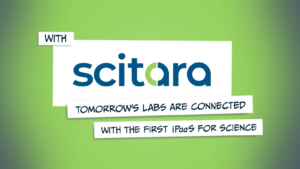In today’s advanced laboratory environments, where cutting-edge research and scientific breakthroughs are pursued, efficient data management and seamless instrument integration play a vital role. However, many laboratories still rely on outdated point-to-point integrations, which present numerous challenges and hinder productivity. In this blog, we will explore the common obstacles faced when managing point-to-point integrations in a laboratory setting and discuss the importance of adopting more streamlined approaches with lab data automation.
Complexity and Scalability:
Managing multiple point-to-point integrations becomes increasingly complex as the number of instruments and systems grows. Each integration requires custom coding and configuration, leading to a tangled web of connections that are difficult to troubleshoot and maintain. Furthermore, as new instruments or technologies are introduced, additional integrations need to be developed, resulting in scalability challenges and increased costs.
Lack of Standardization:
Point-to-point integrations often lack standardized protocols and formats, making it difficult to establish consistency in data acquisition, storage, and analysis. Diverse instruments and systems have unique communication requirements, leading to a fragmented data landscape. This inconsistency hampers collaboration, hinders data comparison, and increases the risk of errors or misinterpretations.
Limited Flexibility and Adaptability:
Laboratories constantly evolve, requiring the integration of new instruments, technologies, and data sources. With point-to-point integrations, accommodating these changes is time-consuming and resource intensive. Any modifications or upgrades in one integration may cause ripple effects throughout the system, leading to delays, disruptions, and potential data loss.
Data Integrity and Security:
Maintaining data integrity and security is a paramount concern in laboratory environments. Point-to-point integrations often lack robust data validation mechanisms, increasing the risk of data corruption, loss, or unauthorized access. Additionally, disparate integrations may not comply with industry or regulatory standards, exposing laboratories to compliance issues and potential data breaches. Lab automation software incorporates data validation mechanisms, encryption protocols, and data integrity checks, ensuring lab data integrity and compliance with industry and regulatory requirements.
Collaboration and Knowledge Silos:
Point-to-point integrations isolate data and workflows within specific instruments or systems, leading to knowledge silos and hindering collaboration. Researchers may struggle to access and share data across different platforms, impeding cross-functional projects and limiting the potential for collaborative discoveries. The lack of centralized data management also hinders data analytics and the extraction of meaningful insights. Digital laboratory solutions with automated data transfer for LIMS/ELN facilitate seamless data sharing, collaboration, and knowledge transfer, breaking down silos and fostering innovation.
Addressing the Challenges: Adopting a Unified Integration Platform
To overcome the challenges posed by point-to-point integrations, laboratories are increasingly turning to unified integration platforms, such as iPaaS solutions. These platforms offer a range of benefits, including:
- Centralized Integration: A unified integration platform replaces multiple point-to-point integrations with a single, centralized hub, simplifying management and reducing complexity. Instruments and systems can be seamlessly connected, eliminating the need for custom coding and individual configurations.
- Standardization and Interoperability: A unified platform enables the establishment of standardized protocols and formats for data exchange, ensuring consistency across instruments and systems. This promotes interoperability, facilitates data comparison, and enhances collaboration between researchers and teams.
- Scalability and Adaptability: With a unified platform, integrating new instruments or technologies becomes easier and more scalable. The platform can accommodate changes without disrupting existing integrations, providing flexibility and adaptability as laboratories evolve.
- Enhanced Data Security: Unified integration platforms prioritize data integrity and security. They incorporate robust data validation mechanisms, encryption protocols, and access controls, ensuring data confidentiality and compliance with industry regulations.
- Collaboration and Knowledge Sharing: A unified platform facilitates seamless data sharing, collaboration, and knowledge transfer across teams and departments. Researchers can access and analyze data from various sources within a unified environment, fostering innovation and accelerating scientific discoveries.
Conclusion:
Point-to-point integrations pose significant challenges in laboratory environments, impeding efficiency, collaboration, and data integrity. However, laboratories can overcome these challenges by embracing unified integration platforms. By adopting a centralized and standardized approach, laboratories can streamline their operations, improve scalability and adaptability, enhance data security, and foster collaboration and knowledge sharing.
The transition from point-to-point integrations to a unified platform empowers laboratories to optimize their workflows, reduce complexity, and ensure data integrity. Researchers can focus on their core work, leveraging advanced analytics and insights to drive scientific discoveries. Moreover, adopting a unified integration platform aligns laboratories with industry best practices and regulatory compliance, mitigating risks and ensuring data confidentiality.
As laboratories continue to push the boundaries of scientific research, it is crucial to leverage the technological advancements available to streamline operations. By embracing unified integration platforms and connecting lab instruments, laboratories can overcome the challenges posed by point-to-point integrations and unlock new opportunities for innovation, collaboration, and impactful scientific breakthroughs. The future of laboratory integration lies in the adoption of a unified approach, paving the way for a more efficient, connected, and productive scientific community.
Learn more about Scitara’s iPaaS for Science and its applications.
